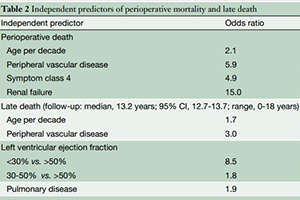Full myocardial revascularization with bilateral internal mammary artery Y grafts
Abstract
Background: Bilateral internal mammary artery (BIMA) grafting in coronary artery surgery provides better long term outcomes than single internal mammary artery and saphenous vein grafting but the optimum configuration of BIMAs has not been established. This study analyzed perioperative and late outcomes of patients who underwent BIMA grafting with a composite Y configuration.
Methods: Patients (n=922) who underwent BIMA Y grafting were identified from a cardiac surgical database and then cross matched against hospital and cardiology databases and the state death register to identify episodes of repeat coronary angiography, cardiac surgical re-intervention and death. Analysis of repeat angiography was performed after retrieval of the angiogram reports.
Results: In 95% of patients, full myocardial revascularization was achieved with BIMAs alone, using a composite Y configuration with an average of 4.1 IMA to coronary artery anastomoses per patient. The perioperative mortality was 1.5% and the 5-, 10- and 15-year survival estimates were 95%, 87% and 77% respectively. Analysis of 166 symptom-driven post-discharge coronary angiograms showed grafts to the left anterior descending artery and increasing severity of coronary artery stenosis at preoperative angiography as predictors of anastomotic patency.
Conclusions: Full myocardial revascularization can be achieved with reasonable safety in most patients with triple vessel disease and good left ventricular function, and provides good late survival.
Cover






